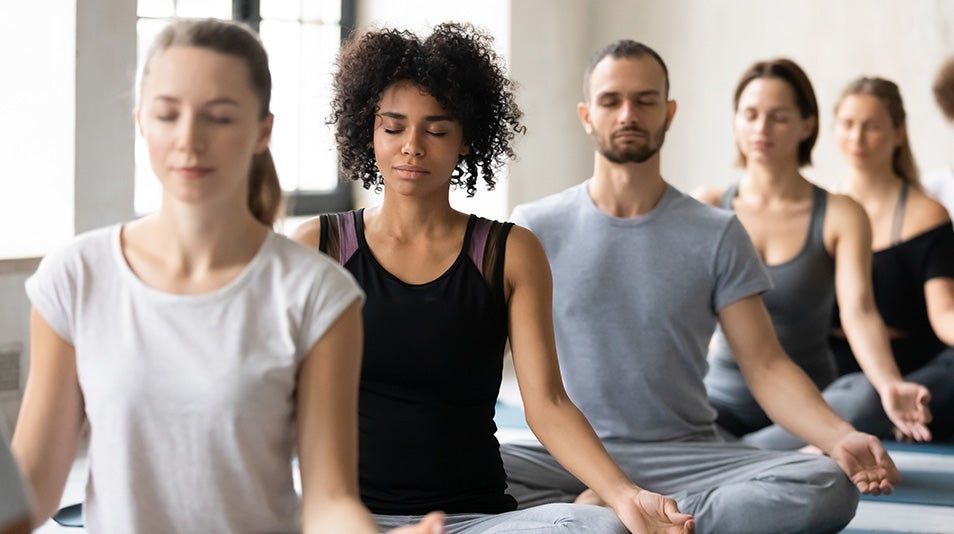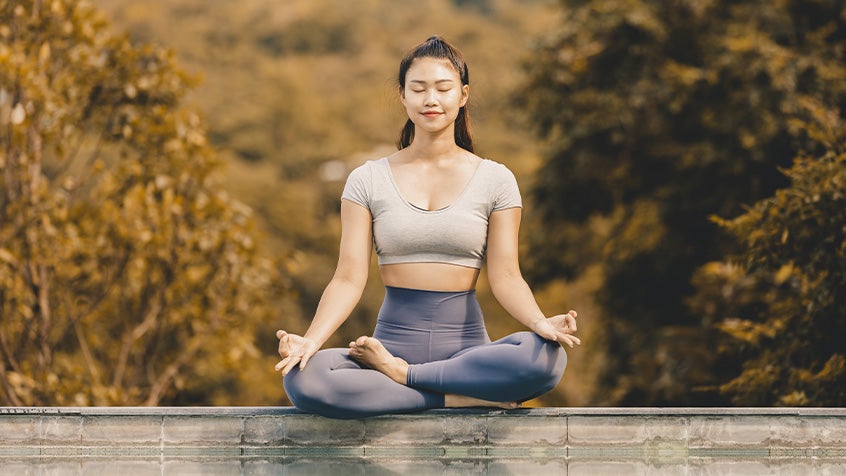A guide to meditation
by Tali Samoylenko on Tuesday 10 May 2022
5 min read
Feel like you’re just way too busy to stop and take a breather? Interested in meditation and mindfulness but just don’t have the time? Taking a moment to yourself doesn’t have to be a hassle. In fact, there are a few super easy techniques you can practise to feel calmer and more relaxed in just a few minutes.
So, whether you’re stuck in traffic, waiting in a queue or looking for ways to wind down before bed, here are a few helpful tips:
1. Breathe
The first step to meditation is effective breathing. That means inhaling deep into your diaphragm instead of taking short, shallow breaths into your chest. You’ll notice your belly moving in and out when you do it correctly. If you’re new to deep breathing and it doesn’t come naturally, try laying on your back and taking long, drawn out breaths. When you lie down, you automatically breathe into your diaphragm. Pop your hands onto your belly to remember what this feels like so that you can reference the feeling in future.
Start all of your meditation sessions by breathing deeply and slowly. It’ll help to calm you down and prepare your body too!
2. Be mindful
Now that you’re much more relaxed, it’s time to pay attention to your surroundings. Start recognising sensations – like the feeling of your seat against your back, or the way your clothes rest on your skin. Begin focusing on your feet, and work your way up all the way to your neck and face, relaxing each body part as you move up.
If you’re short on time, you can stop here, but if you’ve set aside some ‘you-time’, read on!
3. Let your thoughts flow
Awesome! Now you’re really ready to zone out. Let’s get even deeper into it. A common misconception about meditation is that your mind needs to be completely quiet. This is entirely false – meditation is really anything you want it to be, and is personal to every individual. If you get something out of your session, you’re doing it right!
A great way to go further into your meditation practice is to close your eyes and continue breathing deeply, observing all of your thoughts passing through your mind as if they were visitors. There’s no need to engage with any of your thoughts and there’s no pressure to have (or not have) them. If you’re struggling, just continue to breathe and pay attention to the ways your senses are being stimulated. It’ll take your mind off the world around you and give you the break your body has most likely been waiting for.
If you’re looking for a new way to unwind and take care of your mental health, give one of our yoga or pilates classes a go! They’re focused on helping you take time out of your busy day to reenergise and reconnect with yourself.
Related articles
Unwind
3 min read
Can rest days make you stronger?
Nourish
3 min read
Food mind games: how stress affects your appetite
Unwind
3 min read
Mouth-taping sleep trends: nose vs mouth breathing facts
Enjoying our blog?
Sign up to our newsletter to get updates on training, healthy living, news and events.




